Results 1-28 of 28
<<< Previous 1 Next >>>
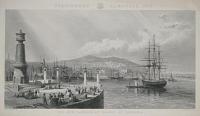
The New Harbour Of Refuge At Holyhead.
Drawn by P. Phillips. Engraved by H. Adlard.
Stationers' Almanack, 1858.
Steel engraving, sheet 265 x 455mm. 10½ x 18". Trimmed within plate.
Holyhead is the largest town in the county of Anglesey in the north west of Wales. Holyhead's maritime importance was at its height in the 19th century when the two and a half mile breakwater, widely acknowledged to be one of Britain's finest, was built, creating a safe harbour for vessels caught in stormy waters on their way to Liverpool and the industrial ports of Lancashire. Engraved for the Stationers' Almanack. The Stationers' Company had published the Stationers' Almanack since 1747, a single-sheet which consisted of calendar text set out beneath an engraved headpiece that recorded significant events of the preceeding year.
[Ref: 9986] £180.00
(£216.00 incl.VAT)
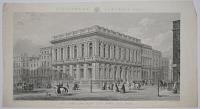
The Army And Navy Club House, Pall Mall.
Drawn by J. Marchant. Engraved by H. Adlard.
Stationers' Almanack, 1853.
Steel engraving, sheet 250 x 460mm (9¾ x 18"). Trimmed within plate.
View of the Army and Navy Club on the corner of Pall Mall and St James's Square, formerly known as George Street. Men on horseback, horse-drawn carriages and pedestrians in foreground. Engraved for the Stationers' Almanack. Founded in August 1837, the year Queen Victoria acceded to the Throne, the Club was formed to meet the needs of the many army officers wanting to join a Service Club, most of which were already full. The great Duke of Wellington said he would become neither a patron nor a Member unless membership was also offered to officers of the Royal Navy and Royal Marines. Hence, the "Army Club" became the Army and Navy Club. The Stationers' Company had published the Stationers' Almanack since 1747, a single-sheet which consisted of calendar text set out beneath an engraved headpiece that recorded significant events of the preceeding year.
[Ref: 9977] £220.00
(£264.00 incl.VAT)
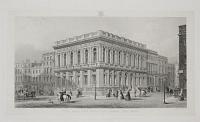
The Army And Navy Club House, Pall Mall.
Drawn by J. Marchant. Engraved by H. Adlard.
[n.d., c.1865.]
Steel engraving on india. 255 x 440mm (10 x 17¼"), very large margins.
A view of the Army and Navy Club on the corner of Pall Mall and St James's Square, with the crest of the Stationers' Company above the image. The view was originally published as the Stationers' Almanack for 1853, but this example appears to be from a later compilation.
[Ref: 43280] £260.00
(£312.00 incl.VAT)
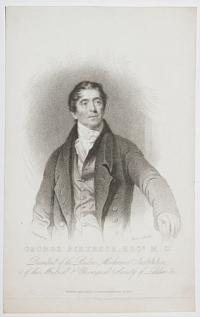
George Birkbeck, Esq.r M.D. President of the London Mechanics Institution & of the Medical & Chirurgical Society of London; &c.
Engraved by Henry Adlard.
Knight and Lacey, London February 16, 1828.
Stipple. Sheet: 220 x 130mm (8¾ x 5"). Trimmed within plate.
A view of the physician and pioneer of adult education George Birkbeck (1776-1841), he founded the Birkbeck University of London and was head of the Chemical Society.
[Ref: 45980] £45.00
(£54.00 incl.VAT)

The South Front of The British Museum.
Drawn by F. Mackenzie. Engraved by H. Adlard.
[n.d., c.1865.]
Steel engraving on india. 255 x 440mm (10 x 17¼"), with very large margins.
A view of the south front of the British Museum, Bloomsbury, facing Great Russell Street. Above the image is the crest of the Stationers' Company. The view was originally published as the Stationers' Almanack 1852, but this example appears to be from a later compilation. In January 1759, doors opened for first time & the British Museum was opened as a public attraction
[Ref: 43282] £260.00
(£312.00 incl.VAT)

The New Extended Front Of Buckingham Palace.
Drawn by J Marchant. Engraved by H. Adlard.
[n.d., c.1865.]
Steel engraving on india. 255 x 440mm (10 x 17¼"), with very large margins.
A view of the East Front of Buckingham Palace, facing St James's Park, designed by Edward Blore and built by Thomas Cubitt, completed in 1850. Above the image is the crest of the Stationers' Company. The view was originally published as the Stationers' Almanack c.1850, but this example appears to be from a later compilation.
[Ref: 43281] £260.00
(£312.00 incl.VAT)

The Population of the British Empire 1821.
H. Adlard Sculp.
[n.d., c.1821.]
Etching on paper watermarked 1825. Plate 165 x 125mm (6½ x 5"), with margins.
A portrait of Prime Minister George Canning surrounded by rings giving the population statistics of London, Edinburgh and Dublin, the Home Countries and counties. Around the outer ring is a text 'India and other Foreign Possessions upwards of 82 Millions'. See Ref: 9523, 9524 & 9548
[Ref: 60236] £95.00
(£114.00 incl.VAT)

The New Coal Exchange, Thames Street, at the Ceremony of its Opening in 1849.
Drawn by J. Salmon. Engraved by H. Adlard.
[n.d., c.1865.]
Steel engraving on india. 255 x 440mm (10 x 17¼"), with very large margins.
The opening of the Coal Exchange by Prince Albert (seen in the foreground). Above the image is the crest of the Stationers' Company. The view was originally published as the Stationers' Almanack 1852, but this example appears to be from a later compilation.
[Ref: 43283] £240.00
(£288.00 incl.VAT)
![Yours very faithfully Eliza Cook [facsimile signature.]](img-thumbnail/jpegs/12705.jpg)
Yours very faithfully Eliza Cook [facsimile signature.]
Wilhelm Trautschold, Pinx. Henry Adlard sculp.
Printed by H. Adlard. [n.d. c.1850.]
Stipple. 409 x 330mm.
Eliza Cook (1818-89), poet and journalist. She began to write verses before she was fifteen; indeed, some of her most popular poems, such as ‘I'm afloat’ and the ‘Star of Glengarry,’ were composed in her girlhood. Her first volume, ‘Lays of a Wild Harp,’ appeared as early as 1835, when she was but seventeen. Encouraged by its favourable reception, she began to send verses without revealing her name to the ‘Weekly Dispatch,’ the ‘Metropolitan Magazine,’ and the ‘New Monthly Magazine;’ and Jerdan sang her praises in the ‘Literary Gazette.’ After a time she confined herself to the ‘Weekly Dispatch,’ where her first contribution had appeared under the signature ‘C.’ on 27 Nov. 1836. In May of the following year that paper printed the ‘Old Arm Chair’ with her initials. This, by far the most popular of Eliza Cook's poems, was inspired by affection for her dead mother. Its success and that of other verses from the same pen induced the proprietor of the ‘Dispatch’ (Alderman Harmer of Ingress Abbey in Kent) to have a notice inserted in his paper requesting that the writer would reveal her name. Eliza Cook, who was now living in the neighbourhood of St. George's Road, Walworth, complied with the request. The result was a handsome pecuniary acknowledgment, and a regular engagement to contribute to the paper. Her second volume, entitled ‘Melaia and other Poems,’ was published in London in 1838 (reissued in 1840 and 1845), and met with great success both in England and America, where an edition was issued at New York in 1844. The poem which gave its title to the volume is an eastern tale, the theme being the attachment of a dog to his master. In May 1849 Eliza Cook brought out a publication upon somewhat similar lines to ‘Chambers's Journal,’ which she called ‘Eliza Cook's Journal.’ Great part of its contents reappeared in ‘Jottings from my Journal,’ 1860. They consisted of essays and sketches written in a simple, clear, and unpretending style, and generally conveyed some moral lesson. Some of them are mild satires on the social failings of her contemporaries, and exhibit good sense and some humour. DNB: G. Le. G.N. 1901. NPG: D34086.
[Ref: 12705] £95.00
(£114.00 incl.VAT)
![James Cook [facsimile autograph.]](img-thumbnail/jpegs/19244.jpg)
James Cook [facsimile autograph.]
Painted by N. Dance, Esq. R.A. Engraved by W. Holl.
Fisher, Son, & Co. London, & Paris [n.d., c.1850.]
Engraving, frontispiece?, sheet 260 x 195mm. 10¼ x 7¾".
James Cook (1728 - 1779). The son of a Yorkshire labourer, Cook learned his seamanship on small East-coast traders. Although only a warrant officer, he was chosen to command the Endeavour in 1768. He made three important voyages of discovery to the South and North Pacific - charting land, sea and stars - and was the first British captain to land in Australia. He was killed in Hawaii during a skirmish. After Nathaniel Dance Nathaniel Dance (1735 - 1811). The original portrait was commissioned by the explorer Sir Joseph Banks and was praised as an excellent likeness.
[Ref: 19244] £65.00
(£78.00 incl.VAT)

New Government Buildings, Parliament Street.
Drawn by John O'Conner. Engraved by H. Adlard.
[n.d., c.1865.]
Steel engraving on india. 255 x 440mm (10 x 17¼"), with very large margins.
The Whitehall facade of what is now the Foreign and Commonwealth Office, designed by George Gilbert Scott, begun in 1861, finished 1868. Originally the building housed four separate government departments: the Foreign Office, the India Office, the Colonial Office, and the Home Office. Above the image is the crest of the Stationers' Company. The view was originally published as the Stationers' Almanack 1852, but this example appears to be from a later compilation.
[Ref: 43284] £260.00
(£312.00 incl.VAT)
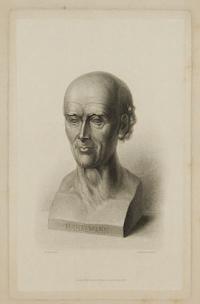
Hahnemann.
M. Gauchi, del.t. Henry Adlard, sculp.t.
London: Tho.s Hurst, St. Pauls Church-Yard, 1837.
Rare stipple. Platemark: 225 x 145mm. (8¾ x 5¾"), with very large margins. Laid on India paper. Foxing outside platemark. Tears to left edge of sheet.
A portrait of the bust, created by David von Angers, 1837, of Dr. Samuel Hahnemann (1755 - 1843). Hahnemann was a German physician, best known for creating a system of alternative medicine called homeopathy. Hahnemann was dissatisfied with the state of medicine in his time, and particularly objected to practices such as bloodletting, he began developing his new technique in 1792, and first published an article about the homeopathic approach in a German-language medical journal in 1796. Following a series of further essays, he published in 1810 "Organon of the Rational Art of Healing", the first systematic treatise and containing all his detailed instructions on the subject.
[Ref: 31689] £220.00
(£264.00 incl.VAT)

Hahnemann.
[M. Gauchi, del.t. Henry Adlard, sculp.t.]
London: Tho.s Hurst, St. Pauls Church-Yard, 1837.
Rare stipple. Platemark: 225 x 145mm. (8¾ x 5¾"). Laid on India paper.
A portrait of the bust, created by David von Angers, 1837, of Dr. Samuel Hahnemann (1755 - 1843). 'Hahnemann' inscribed under portrait, as well as on the bust itself. See ref: 31689 for untitled version. Hahnemann was a German physician, best known for creating a system of alternative medicine called homeopathy. Hahnemann was dissatisfied with the state of medicine in his time, and particularly objected to practices such as bloodletting, he began developing his new technique in 1792, and first published an article about the homeopathic approach in a German-language medical journal in 1796. Following a series of further essays, he published in 1810 "Organon of the Rational Art of Healing", the first systematic treatise and containing all his detailed instructions on the subject. Welcome. 1271-10.
[Ref: 31699] £220.00
(£264.00 incl.VAT)

The Royal Botanic Gardens at Kew.
Drawn by John O'Conner. Engraved by H. Adlard.
[n.d., c.1865.]
Steel engraving on india. 255 x 440mm (10 x 17¼") very large margins.
The Palm House of Kew Gardens, built 1844-48) by architect Decimus Burton and iron founder Richard Turner, the first large-scale structural use of wrought iron. Originally the glass was tinted green with copper oxide to reduce heat from the sun. Above the image is the crest of the Stationers' Company. The view was originally published as the Stationers' Almanack 1852, but this example appears to be from a later compilation.
[Ref: 43285] £320.00

Cloth Hall, Court House. &c. From Park Row, Leeds.
Engraved by H. Adlard, from a Drawing by R.D. Chantrell, Architect.
Published by Robinson & Hernaman, Leeds. [n.d. c.1830.]
Engraving. 209 x 324mm. 8¼ x 12¾".
Central scene, Leeds.
[Ref: 15119] £120.00
(£144.00 incl.VAT)
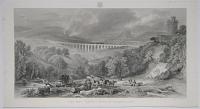
The Dee Viaduct, Vale Of Llangollen.
Drawn by P. Phillips. Engraved by H. Adlard.
[1858.]
Steel engraving on india laid paper, sheet 250 x 460mm. 9¾ x 18". Trimmed.
A steam train on the Dee Viaduct in Wales. In the foreground men chop logs and load them onto a cart. Engraved for the Stationers' Almanack, with the Company's coat of arms above. The Stationers' Company had published the Stationers' Almanack since 1747, a single-sheet which consisted of calendar text set out beneath an engraved headpiece that recorded significant events of the preceeding year.
[Ref: 9988] £230.00
(£276.00 incl.VAT)
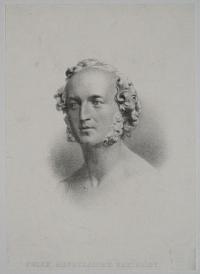
Felix Mendelssohn Bartholdy.
[n.d. c.1840.]
Lithograph. 255 x 185mm. 10 x 7¼". Some wrinkles and creases tear on rightnear title.
Jakob Ludwig Felix Mendelssohn Bartholdy (1809-1847) was a German composer, pianist, organist and conductor of the early Romantic period. From the Collection of J.S. Bumpus.
[Ref: 17241] £130.00
(£156.00 incl.VAT)
![Felix Mendelssohn Bartholdy [facsimile signature.]](img-thumbnail/jpegs/17207.jpg)
Felix Mendelssohn Bartholdy [facsimile signature.] "And after the fire there game a still small voice And in that still small voice onwards came the Lord." Elijah.
H. Adlard.
H. Hensel, Leipzig. Novr. 6th.1847.
Engraving. 165 x 110mm. 6½ x 4¼".
Death mask of Jakob Ludwig Felix Mendelssohn Bartholdy (1809-1847), German composer, pianist, organist and conductor of the early Romantic period. From the Collection of J.S. Bumpus.
[Ref: 17207] £50.00
(£60.00 incl.VAT)
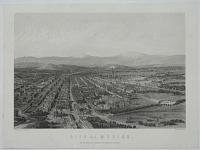
City of Mexico.
Drawn by G.F. Sargent. Henry Adlard.
William Mackenzie, London, Edinburgh & Glasgow. [n.d. c.1860.]
Engraving. 165 x 222mm. 6½ x 8¾".
Mexico city in the 19th century with the zocalo and cathedral visible and the old roman amphitheatre.
[Ref: 20784] £60.00
(£72.00 incl.VAT)

City of Mexico.
Drawn by G.F. Sargent. Henry Adlard.
W.R. Mc.Phun & Son. Publishers, Glasgow. [n.d. c.1860.]
Engraving. 165 x 248mm. 6½ x 9¾". Crease.
Mexico city in the 19th century with the zocalo and cathedral visible and the old roman amphitheatre.
[Ref: 20785] £50.00
(£60.00 incl.VAT)
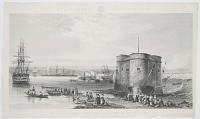
Milford Haven _ With The Leviathan In The Distance.
Drawn by P. Phillips. Engraved by H. Adlard.
Stationers' Almanack, 1859.
Steel engraving, sheet 255 x 430mm. 10 x 17". Trimmed within plate. Small tears to extremities lower right.
View of Milford Haven in Pembrokeshire, south-west Wales. It was founded as a whaling centre in the 18th century and grew into a major port. In the background is the SS Great Eastern, an iron sailing steam ship designed by Isambard Kingdom Brunel. She was the largest ship ever built at the time of her 1858 launch, and had the capacity to carry 4,000 passengers around the world without refueling. Engraved for the Stationers' Almanack. The Stationers' Company had published the Stationers' Almanack since 1747, a single-sheet which consisted of calendar text set out beneath an engraved headpiece that recorded significant events of the preceeding year.
[Ref: 9985] £180.00
(£216.00 incl.VAT)
![[Porcelain Tower, Nanking.]](img-thumbnail/jpegs/8388.jpg)
[Porcelain Tower, Nanking.]
.
[n.d., c.1843].
Engraving, 230 x 295mm. A very fine proof before letters on large paper, of 8387. Some foxing around image.
A procession of people passing the tower in Nanking (Nanjing).
[Ref: 8388] £120.00
(£144.00 incl.VAT)
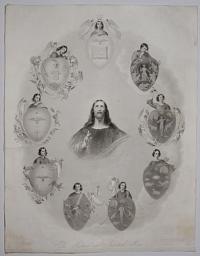
The Natural and Spiritual Man.
Designed by B. Rankin.-Drawn by J.H. Nixon. Entered at Stationer's Hall. Proof.
Engraved by H. Adlard & Published by Bagsters, Paternoster Row London & may be had of Mr. Miller, 47, Fish Street Hill. Printed by E. Brain. [n.d. c.1830.]
Etching and engraving, very rare proof on india. India 590 x 462mm (23¼ x 18¼"). Creasing and some damage.
Christ with hand raised in blessing in the centre, ringed by eight large hearts each in front of the bust of a man, with symbols of vice and virtue, such as the dove for purity, and the peacock for pride, forming a cycle from a reprobate, top right, through the natural man and regeneration at the bottom, to Sanctification and Peace, at the top, where the man is crowned by angels.
[Ref: 29071] £140.00
(£168.00 incl.VAT)
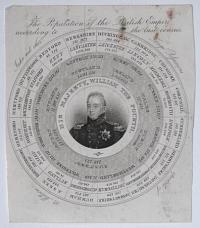
The Population of the British Empire according to the last census.
Adlard, Henry
[n.d., c.1830.]
Engraved dial chart with portrait of William IV at centre, portrait with stippling and etching. Sheet 115 x 100mm, 4½ x 4". Trimmed within plate. Ink stains. Vertical centre crease.
A population chart with figures for Great Britain and Ireland, the English counties separately divided on the outer edge. Also 'India and other Foreign Possessions upwards of 82 Millions' inscribed around outer edge. William IV (1765 – 1837) was King of the United Kingdom of Great Britain and Ireland and of Hanover from 26 June 1830 until his death. See Ref: 60236, 9524 & 9548
[Ref: 9523] £45.00
(£54.00 incl.VAT)
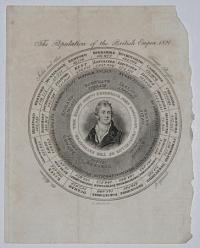
The Population of the British Empire, 1821.
H. Adlard sc.
[1821.]
Engraved dial chart with portrait of Frederick Robinson at centre, portrait with stippling and etching. Sheet 160 x c.125mm, 6¼ x 5". Vertical crease. Torn into plate at right.
A population chart with figures for Great Britain and Ireland, the English counties separately divided on the outer edge. Also 'India and other Foreign Possessions upwards of 82 Millions' inscribed around outer edge. Portrait of Frederick John Robinson, Viscount Goderich, afterwards first Earl of Ripon (1782 - 1859), statesman. See Ref: 60236, 9523 & 9524
[Ref: 9548] £40.00
(£48.00 incl.VAT)
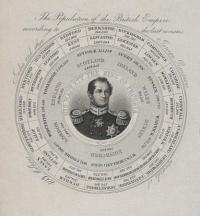
The Population of the British Empire according to the last census.
Adlard, Henry
[n.d., c.1840.]
Engraved dial chart with portrait of King Frederick William IV of Prussia at centre, portrait with stippling and etching. Sheet 115 x 100mm, 4½ x 4".
A population chart with figures for Great Britain and Ireland, the English counties separately divided on the outer edge. Also 'India and other Foreign Possessions upwards of 103 Millions' inscribed around outer edge. King Frederick William IV of Prussia (1795 - 1861), the eldest son and successor of Frederick William III of Prussia, reigned as King of Prussia from 1840 to 1861. See Ref: 60236, 9523 & 9548
[Ref: 9524] £45.00
(£54.00 incl.VAT)

Railway Bridge over the River Tamar.
Drawn by P. Phillips. Engraved by H. Adlard.
[n.d., c.1860.]
Wood engraving. Sheet 230 x 425mm (9 x 16¾") Trimmed into sur-title, tear top right.
An oval view of the Royal Albert Bridge, designed by Isambard Kingdom Brunel (1806-59) to carry the new railway line linking Cornwall to the rest of England. Brunel died shortly after the opening. From the Stationers' Company Almanack.
[Ref: 41335] £220.00
(£264.00 incl.VAT)
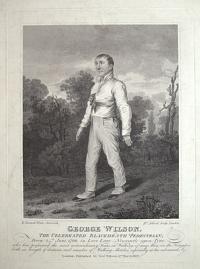
George Wilson, The Celebrated Blackheath Pedestrian, Born 24th June 1766, in Love Lane, Newcastle-upon-Tyne, who has performed the most extraordinary Feats in Walking of any Man in the Kingdom both in length of distance and number of Walking Matches, especially at his advanced Age.
E. Gerard Pinx, Norwich. H.y Adlard, Sculp, London.
London, Published by Geo.e Wilson, 17th March, 1821.
Etching. 330 x 240mm (13 x 9½"), with very large margins. Bit dusty.
George Wilson (1766-1839), known as the 'Blackheath Pedestrian' for his attempt to walk a thousand miles around the heath in 20 days for a prize of £100. He failed because the authorities charged him with disturbing the peace because of the crowds that followed him. Although he was acquitted his arrest made the feat impossible, so he lost the prize, but a collection at the London Stock Exchange matched the £100 within two hours.
[Ref: 53062] £380.00
<<< Previous 1 Next >>>








![Yours very faithfully Eliza Cook [facsimile signature.]](img-thumbnail/jpegs/12705.jpg)
![James Cook [facsimile autograph.]](img-thumbnail/jpegs/19244.jpg)







![Felix Mendelssohn Bartholdy [facsimile signature.]](img-thumbnail/jpegs/17207.jpg)



![[Porcelain Tower, Nanking.]](img-thumbnail/jpegs/8388.jpg)





